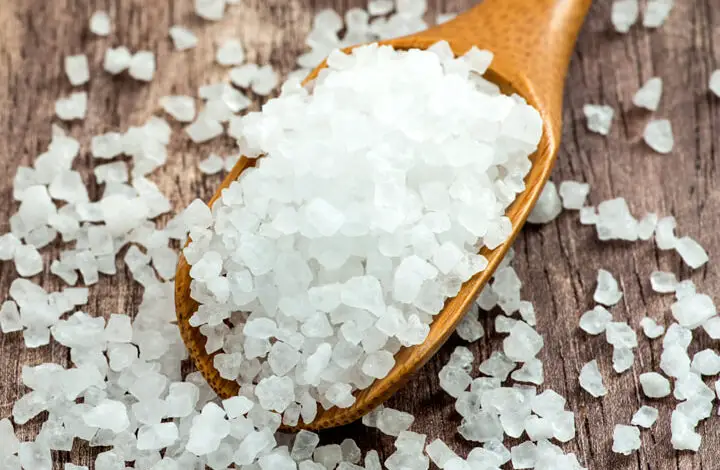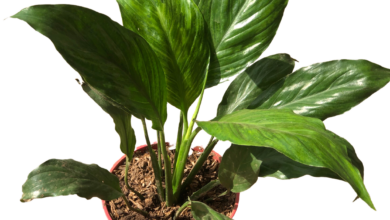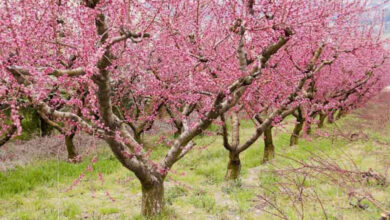Is Epsom Salt Good For Fruit Trees, Vegetables, And Shrubs?

Taking care of our plants and ensuring their health is essential for any gardener or plant enthusiast.
One popular product that has gained attention in the gardening community is Epsom salt. Known for its potential benefits, Epsom salt has been widely used in plant care. In this article, we will explore the effectiveness of Epsom salt for fruit trees, vegetables, and shrubs, and understand how it can positively impact their growth and overall health.
Table of Contents
- What is Epsom salt?
- How does Epsom salt benefit plants?
- Using Epsom salt for fruit trees
- Using Epsom salt for vegetables
- Using Epsom salt for shrubs
- Application methods
- Precautions and considerations
- Other natural alternatives
- Common misconceptions
- Case studies and testimonials
- Expert opinions
- Conclusion
- FAQs
- Can Epsom salt be used on all types of fruit trees?
- How often should I apply Epsom salt to my vegetables?
- Is Epsom salt safe for organic gardening?
- Can Epsom salt help with shrubs affected by pests?
- Can Epsom salt replace other fertilizers?
What is Epsom salt?
Epsom salt, chemically known as magnesium sulfate, derives its name from the natural salt springs in Epsom, England, where it was first discovered.
It is composed of magnesium, sulfur, and oxygen, and is commonly used for various purposes, including medicinal and agricultural applications.
How does Epsom salt benefit plants?
Magnesium deficiency is a common issue in plants, leading to stunted growth, yellowing leaves, and poor fruit development. Epsom salt acts as a quick and effective source of magnesium, which is vital for plant nutrition. Additionally, sulfur present in Epsom salt aids in the formation of chlorophyll, the pigment responsible for photosynthesis, contributing to overall plant vitality.
Using Epsom salt for fruit trees
When applied to fruit trees, Epsom salt helps promote healthy growth and enhances fruit production. Magnesium deficiency in fruit trees can lead to reduced yield and poor fruit quality.
By providing a readily available source of magnesium, Epsom salt addresses this deficiency and supports the development of vibrant, productive fruit trees.
Using Epsom salt for vegetables
Vegetables also benefit from Epsom salt applications. Magnesium plays a crucial role in nutrient absorption, ensuring that plants can effectively utilize the available nutrients in the soil.
By improving nutrient uptake, Epsom salt enhances the overall health and vigor of vegetable plants, resulting in better yields and improved taste.
Using Epsom salt for shrubs
Shrubs, known for their lush foliage, can also benefit from Epsom salt. Yellowing leaves in shrubs can be a sign of magnesium deficiency. By supplying the necessary magnesium, Epsom salt helps combat this issue, leading to vibrant, green foliage and healthier shrubs overall.
Application methods
Epsom salt can be applied to plants through two main methods: soil application and foliar spray.
For soil application, Epsom salt can be spread evenly around the base of the plant and watered thoroughly. Foliar spray involves diluting Epsom salt in water and spraying it directly onto the leaves. The dosage and frequency of application may vary depending on the specific plant and its requirements.
Precautions and considerations
While Epsom salt can be beneficial, it is essential to use it judiciously. Excessive use of Epsom salt can disrupt the balance of other essential nutrients in the soil.
It is recommended to test the soil pH and consult with a local gardening expert to determine the suitability and dosage of Epsom salt for your specific plants.
Other natural alternatives
Apart from Epsom salt, there are various organic alternatives available for plant care. Organic fertilizers, compost, and mulching can provide a balanced nutrient supply to plants. While Epsom salt offers specific benefits, it is essential to consider a holistic approach to plant nutrition.
Common misconceptions
Although Epsom salt has shown positive results in many cases, it is crucial to dispel the misconception that it is a cure-all solution for plant problems. It should be used as a complementary tool in plant care, along with proper watering, adequate sunlight, and balanced nutrition.
Case studies and testimonials
Numerous gardeners have reported success with the use of Epsom salt. These success stories highlight the positive effects of Epsom salt on various plants, including fruit trees, vegetables, and shrubs. Real-life experiences can provide valuable insights and inspiration for other gardeners.
Expert opinions
Horticulturists and plant experts also share their perspective on the effectiveness of Epsom salt. Their knowledge and experience shed light on the specific benefits and limitations of using Epsom salt in plant care, helping gardeners make informed decisions.
Conclusion
Epsom salt can be a valuable tool in the care of fruit trees, vegetables, and shrubs. Its ability to address magnesium deficiency and enhance plant health makes it a popular choice among gardeners.
By understanding its benefits, following proper application methods, and considering expert advice, gardeners can maximize the potential of Epsom salt in their plant care routines. Experimenting with this natural remedy may lead to healthier, more productive plants and a thriving garden.
FAQs
Can Epsom salt be used on all types of fruit trees?
Yes, Epsom salt can be used on a wide range of fruit trees, including citrus, apple, pear, and peach trees. It provides magnesium, which is essential for their growth and development.
How often should I apply Epsom salt to my vegetables?
The frequency of Epsom salt application to vegetables can vary depending on the specific crop and soil conditions. It is recommended to apply Epsom salt once every two to three weeks during the growing season is beneficial.
Is Epsom salt safe for organic gardening?
Yes, Epsom salt is considered safe for organic gardening as it is a naturally occurring mineral. However, it is essential to ensure that the rest of your gardening practices align with organic principles.
Can Epsom salt help with shrubs affected by pests?
While Epsom salt is not a direct solution for pest control, it can indirectly contribute to shrub health, making them more resilient to pest attacks. Combined with other pest management strategies, Epsom salt can help improve overall shrub vigor.
Can Epsom salt replace other fertilizers?
Epsom salt provides specific benefits by addressing magnesium deficiency in plants. However, it is not a complete substitute for other fertilizers. It is best used as a supplement to a balanced fertilizer regimen.







